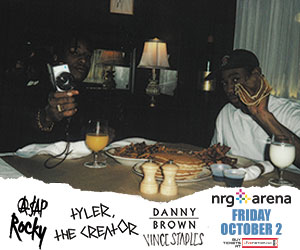Thanksgiving Herstory

By Jennifer Fox Bennett
Art by Monica Villareal
There are so many myths wrapped up in the American holiday of Thanksgiving. The myth has travelled so far from the original feast(s) that the Pilgrims likely celebrated after surviving their first winter in the land now known as Massachusetts that it has come around full-circle. It remains untouched by the Thanksgiving holiday that George Washington declared in December 1777 and even the one that Abraham Lincoln created. The original feast in the fall of 1621 may actually have been part of the Pilgrim’s Puritanical/Calvinist self-flagellating tradition of Days of Thanksgiving — which were more of a fast than a feast.
George Washington declared a military holiday for a singular (not repeating annually) thanksgiving to recognize recent victories at the Battle of Saratoga during the Revolutionary War. Ten years later, he had another holiday declared for November. The proclamation that Abraham Lincoln made, setting aside the 4th Thursday of November — where it remains on the calendar — was created from a political desire to bring a respite from the drawn-out, increasingly bleak Civil War.
The myths of benevolent aid from the local Wampanoag Indians to the Pilgrims of forest meat and the corn shoots to grow their own winter supply are likely not that far from the truth. What is a definite myth is that all Pilgrims were friendly with all Native peoples that they met in their new environs. It is important to rewind the feast about a year before, to the first days that the Pilgrims set foot upon the Cape Cod Peninsula before moving inland to the mainland, just south of present-day Boston.
They landed on the Cape Cod Peninsula in November 1620. On November 16, the Pilgrims found a large, winter cache of corn belonging to local Nauset Indians and promptly absconded with the contents. They stole the corn. They also discovered a large gravesite and promptly dug up the graves, but, unhappy with the lack of material goods, moved on. Two weeks later, they came across another gravesite, dug it up, and stole items that they deemed of value.
The Nausets, understandably upset with the immoral parasites that had threatened their winter supply of food and desecrated their beloved ancestors, made a show of force against the Pilgrims, who packed up ship, moved further west along the Cape Cod Bay to Plymouth, and quickly befriended the local Wampanoag.
One might wonder what would spur the some of the most self-flagellating Christians to loot graves. It is known that the writings of Bartholomew de las Casas extolling the Christian necessity for humane treatment and understanding of Native people was available in English and Dutch at the time that they Pilgrims left Europe. But, a popular writer and Anglican priest had published many papers encouraging the settlement of North America and condoned the practice of looting graves in his Virginia Richly Valued, published a decade before the landing at Plymouth.
It is a story of willful arrogance, immorality (if you view looting graves as such), and egocentric consumption, which is somewhat fitting of modern American celebrations, where overconsumption is a theme of the day.
Despite knowing this history, I still celebrate the holiday and many other Native people do, too. It’s an obviously welcome excuse to visit and celebrate life with loved ones. And yes, eat well. But, for me, it is an intensely personal holiday, not one meant to reenact the nascent racism and superiority complex of the Pilgrim navel-gazing story. It is the opportunity to practice the ancient invocation of both Algonquian and Iroquois people, the Thanksgiving Prayer, and autumnal harvest celebratory feast of our beloved and sacred indigenous foods.
When I eat a traditional Thanksgiving meal, I am awed and humbled by the nutritious density of foods we ate before contact with Europeans: multiple varieties of pumpkin and squash, corn, beans, multiple varieties of berries, maple syrup, turkey, venison, wild rice, and tubers, among others. How lucky we are, to have been gifted these foods that give us every nutrient we ever needed.
My own people, the Odawa, believe that many of these nutritious foods are medicine. Eating them is a part of the greater positive way of living with a good mind which can be summarized in seven philosophies: wisdom, love, respect, truth, courage, honesty, and humility. To live like this is to have/be/living mino bimaadziwin. It is to be in harmony with your fellow beings, the natural world, to have one mind.
I have been to Iroquois functions, during the years I lived in central New York, where I heard a Thanksgiving Address that lasted nearly 20 minutes. In lieu of passing over generalities of “plants,” the speaker has, instead, talked about specific kinds, like medicinal plants, grasses, and the different kinds of food plants, and detailing the ways they make our lives better, more comfortable, more brilliant. The prayer does not thank a singular Being for the gifted, soulless things. Rather, it thanks the individual spirits of the living beings for aiding us in the special way that they do. Important celestial bodies like the sun and moon are close, nurturing family members. The different kinds of animals are often referred to as a nation, such as the beaver people or nation. When your cosmos is filled with so many living things that compel your respect, it bursts with more color and bestows you with profound humility.
I have been to a few Thanksgiving dinners with friends and have given a shortened version of our very similar prayer in hopes of giving a glimmer of our perspective. When asked to contribute food, I often volunteer pie (baking is my specialty) and stuffing. The former, I will make from scratch with maple syrup and pumpkin that I roasted. I will often make stuffing with sage, giblets, wild rice, and cranberries. And I can explain why I make the food the way I do.
These dishes only loosely resemble what was eaten at the 1621 feast, but I get the opportunity to explain why I’ve made them the way I do — tell the stories behind the plants, and thank the plants and herbs for nourishing us and letting us live more brilliantly. It has the effect of appearing to perpetuate the myth of the ever-helpful Indian, but more optimistically, I like to think I am helping break the wall between communication exchange.
Maybe this view that does not condone overconsumption and the dehumanization of fellow humans, coupled with the revolutionary idea that maybe some plants have spirits and some animals might, too…maybe knowing this could instill more humility in our relationships, not just with people, but the world. Or maybe that is just a myth, too.
by Guest Author














